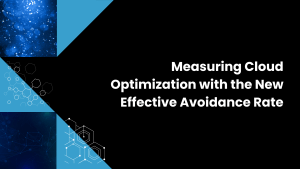
Hewlett Packard Enterprise (HPE) continues to impress as it repositions its broad portfolio of hardware, software, and professional services for opportunities in artificial intelligence (AI).
Last fall, HPE announced new purpose-built hardware/software solutions, configuration guides, reference designs, and centers of excellence to accelerate enterprise customers in their AI adoption. Around that same time, it also brought AI directly into the data center with its launch of InfoSight, an AI-powered recommendation engine that helps IT administrators predictively manage infrastructure, nip technical issues in the bud, and improve application reliability.
This veteran IT solution provider isn’t slowing down in its comprehensive approach to the AI market. Yesterday, HPE announced new solutions, a new professional service offering, and a new partnership to help customers advance in their AI journeys:
- New HPE AI hardware platform: The next-generation HPE Apollo 6500 Gen10 System incorporates eight NVIDIA Tesla V100 GPUs and embeds NVIDIA’s high-bandwidth, energy-efficient NVLink interconnect. HPE has engineered the system to support as much as 3x faster AI model training that the previous generation Apollo 6500 Gen9. HPE has based this training performance claim on internal benchmarks training inception3, resnet50 and vgg16 models built in the Caffe and TensorFlow frameworks. The embedded NVLink supports ultra-fast communication between GPUs and data sharing at rates of up to 10x faster than the traditional PCIe Gen3 interconnect. This new system also enables greater flexibility in configuring systems to match each AI training workload. The new product will be globally available from HPE and channel partners in May 2018.
- New HPE AI hardware partner: HPE has added WekaIO to its AI solution partner ecosystem. The company’s WekaIO MATRIX flash-optimized parallel file storage software is available to resell into AI environments running on the HPE Apollo 2000 Gen10 and HPE ProLiant DL360 Gen10. WekaIO MATRIX supports high-throughput, compute-intensive, and low-latency AI workloads and complements HPE’s Lustre-based storage solutions in supporting AI workloads. WekaIO MATRIX will be globally available from HPE and its channel partners in May 2018.
- New HPE AI vertical solution: HPE’s new Digital Prescriptive Maintenance Services is an AI-powered industrial solution that predicts, suggests, and automates the right actions to prevent and fix equipment issues before they become showstoppers. This new solution captures relevant data sources in the enterprise, such as IoT devices, data centers, and the cloud. It then uses supervised learning for failure prediction and unsupervised learning for anomaly detection by applying AI to predict and fix equipment issues. This is the first in HPE’s promised series of AI-enabled vertical solutions that will address specific industrial use cases. The offering includes consulting, proof of value, and implementation services from HPE Pointnext, as well as technologies and reference architectures from HPE and select partners. It is available niw in Europe and will be globally available in June.
- New HPE AI professional services offering: HPE’s new Artificial Intelligence Transformation Workshop helps customers explore the strategic business impact of potential AI use cases. In the interactive one-day workshops, HPE’s Pointnext team provides consulting expertise to help customers get started with AI, evolve their strategic data and analytics initiatives, assess their data and analytics requirements, prioritize AI use cases, and develop concrete action plans. The workshops are globally available now from HPE Pointnext.
- New HPE AI performance optimization guide: Last year, HPE introduced the HPE Deep Learning Cookbook, which guides customers in choosing the right technology and configuration for their deep learning tasks. Now it has added to that the new Deep Learning Performance Guide, which recommends the optimal hardware and software stacks for various deep learning workloads. This new guide leverages a massive knowledge base of benchmarking results and measurements to estimate workload performance on various system configurations. It can also help customers to detect bottlenecks in existing hardware and guide the design of future systems for AI and deep learning. This new guide will be available on March 30.
In a competitive environment where longtime rivals such as IBM are executing their AI strategies on all fronts, HPE can scarcely rest. The weakest link its HPE’s AI go-to-market strategy is in solutions, for which its long-term strategy focuses on delivering AI reference designs (for natural language processing, video/image analytics, connected healthcare, smart cities, and other use cases that leverage its hardware platforms) rather than full quick-value AI applications. Another weakness is HPE’s failure to provide developer tools for building, training, deploying, and managing AI apps that are built on its platforms.
Here is HPE’s Robert Youngjohns (who has since left the firm) discussing their then-current AI strategy on theCUBE at HPE Discover 2016.
HPE will showcase these newly announced offerings along with the rest of its high-performance computing and AI portfolio at NVIDIA’s GPU Technology Conference, March 26-29 in San Jose.


